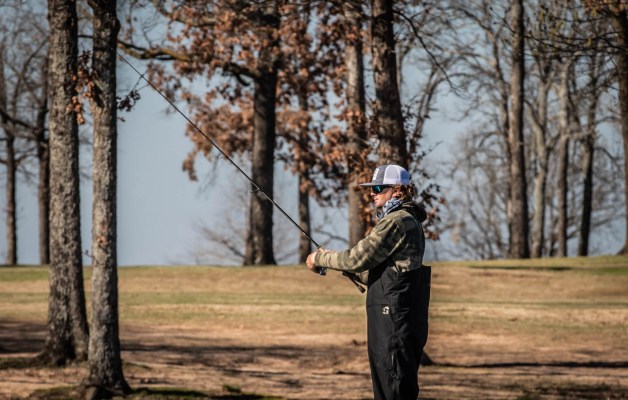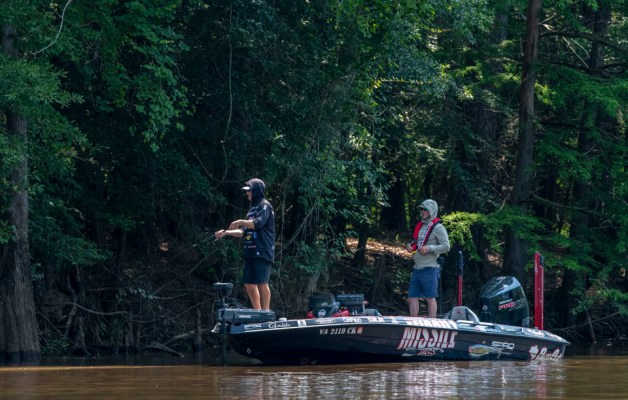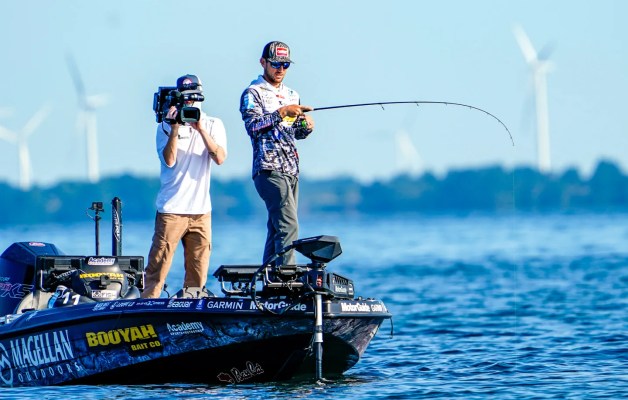One question I get a lot is, “What size line should I use when I’m crankbaiting?” My answer is always the same whether we’re talking about crankbaiting or flipping or spinnerbaiting or anything else.
Use the lightest line you can get away with.
I use a lot of 10-pound-test line when I’m out “just fishing.” I use it when I’m fishing fairly open water with few obstructions for the fish to get around. When I’m fishing heavy brush, I’ll go up to 14-pound or even 16-pound line. I let the situation and conditions dictate which line size I use. Just remember that there are more reasons to use different lines and sizes than just getting hung up and losing lures or fish.
The first step, whether we’re talking about losing a big fish or catching a big fish is always the same — getting her on. If she doesn’t hit your bait, you can’t catch her or lose her. Line size matters here … so does the material from which your line is made.
We all know that in clear water we should use light line. Conventional wisdom says this is so fish can’t see it as well. Yes, that’s part of the reason, but with the fluorocarbon lines we have now, visibility is less of a factor than ever before.
In the last installment of my column I discussed the acoustical signatures of crankbaits. I believe line also leaves a “signature” as it’s pulled through the water. Thicker (heavier) line means more drag for the fish to feel.
Most fishermen believe that the line comes off the end of the rod and goes directly to the crankbait in a fairly straight line to the lure. I’ve spent many hours watching crankbaits in swimming pools and watching how they react. One thing I noticed was that the line goes on a shallow angle lying fairly parallel to the surface until it gets close to the lure, then it turns sharply down.
Many believe the more line you let out trolling, the deeper a deep diver will go. This is true to a point, but with a diminishing effect until, finally, a bait reaches its maximum depth. This is caused by the line having to cut through the water. Simply stated, thicker line means more resistance and less depth.
Thicker line will also act like the tail on a kite. It slows the action. The difference is very subtle, but sometimes this makes all the difference.
Of the three types of line (braid, monofilament and fluorocarbon), I like fluorocarbon for most situations. It has good feel (like braid) and less stretch (than monofilament). If you’re a regular reader of “Dr. Crankenstein,” you may remember how I use my crankbaits to find underwater objects. Fluorocarbon allows me to do this. There are many good line manufacturers out there, but the one I like the best is Gamma —either Touch or Edge, they’re both great lines. I’ve had the best performance with their fluorocarbon.
On occasion, I’ve used braid for crankbaiting. This is usually when I’m using a crankbait in really thick cover. Typically, I’ll use 15-pound-test braid for this. Braid is thin and has a lot of strength. If you try it, be prepared to feel every vibration a lure makes and everything it hits.
I normally stay away from monofilament line unless I’m fishing topwater baits. Sometimes I question this approach, though, because in certain situations the stretch monofilament offers can be forgiving and help you catch more bass.
For more information, check out my website.





